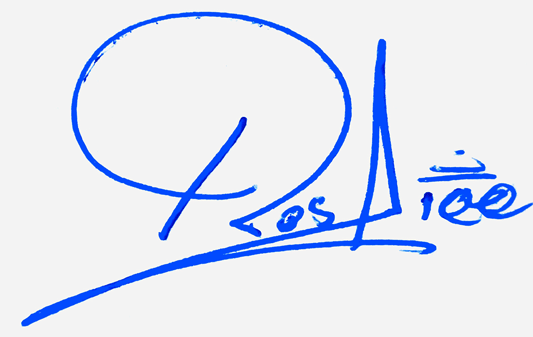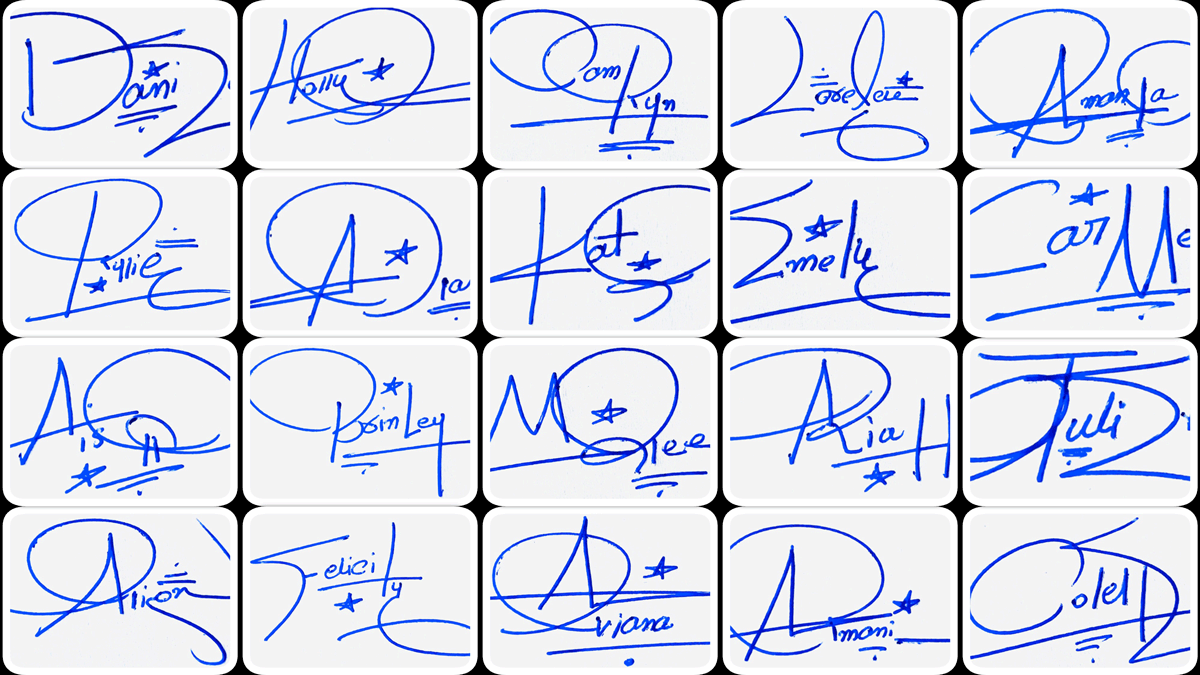Not only is it fun to experiment with how you want your signature to look, but practicing your signature can also ensure you’re prepared for the next time you have to provide it on various documents.
Signature Making Video
Check Your Name in The Video . also we have other videos on the page as well
In this article, we list the benefits of a good signature, explain how to write a signature and provide you with some tips to help you improve your signature-writing technique.

What are the benefits of a good signature?
Whether for your personal or professional use, writing a good signature comes with several benefits. Understanding these benefits can inspire you to create a new signature and help guide you in the right direction. Here are the advantages that come from writing a good signature:
Brand and identity awareness: Having a business signature to use can help make your brand or company more recognizable to your customers, clients and business partners. As an employee or employer, having a consistent signature can help others recognize you more quickly.
Professionalism: When you sign off important documents or other materials with your signature, it emphasizes your professionalism and standing in the business world.
Adds value:
Signing a document with your signature adds value to the document itself. For example, if you’re signing a business document, your signature shows that you agree with what the document states, therefore, validating its contents.
How to write a signature
To start practicing, determine what you want out of a signature and take the appropriate steps toward creating your ideal signature. Use the following steps to write and choose a good signature:
- Decide what you want your signature to convey
While a simple signature is more legible, a complex signature shows more style. The more complex your signature, the more confident or ostentatious you may seem. While doctors tend to have hastily written signatures, actors tend to have more flamboyant signatures with intricate designs.
Determine how your signature may reflect you as a person and how you want it to reflect you as a person. Keep in mind that signatures that only feature initials are typically reserved for more formal or business occasions. If you have a common name, try making your signature longer and more unique to differentiate it from others.
If you’re concerned about someone forging your signature, use your full name and make your signature both clear and unique. When you have a scribbled signature, it’s easier to forge. You can also create two separate signatures, one for personal use and another for business purposes.
- Analyze the letters in your name
Whether you’re updating your current signature or creating your first, look at the letters of your name. Identify the most interesting letters such as the ones with the most loops, curves or slashes such as W, G or B. Then, identify the plainest letters in your name—especially the ones that look similar in both capital and lowercase form such as C or O. Based on this, determine which letters you want as the focal points.
- Determine what parts of your name you want to include
Consider which parts of your name you want to emphasize. For example, while some people sign their full name, others only sign with their first name or their initials. If you’re known by your first name, consider only using that name. If you’re a teacher that goes by their last name, consider signing using only your surname.
- Experiment with different styles
Once you have an idea of how you want your signature to look, start experimenting. Rewrite your signature multiple times to discover new possibilities and ideas. Playing with different styles can help you determine the direction you want to go in. If you’re updating your old signature, consider what you like about your current style and identify what needs work.
- Think outside of the box
It’s important to create a signature that’s uniquely yours. Since it’s not like your everyday writing, you don’t need a legible signature—especially if your signature can make up for it in distinctiveness. Use your creative skills to come up with fun ways to make your signature stand out.
Try making a letter larger to make it stand out or making a letter smaller for it to blend in with the rest of your signature. For example, consider emphasizing the first letter of your name and making the rest of your letters small. You can also have fun with certain elements of your name or underling your signature if you want to add emphasis. Add flourishes, loops, zigzags and other designs as you see fit.
- Choose your favorite signature
After writing a decent amount of signatures, consider which ones felt the most comfortable, which ones look the best, which you can easily replicate and which best represents what you want to convey. Determine which of your signatures use your favorite elements. If you need to, make small modifications until you find your favorite. It also helps to narrow down your list of signatures before choosing the best one.
Tips for writing a good signature
If you need additional help with writing a good signature, consider the following tips:
Find inspiration. To give you some ideas on how to write our signature, do some online research on celebrity signatures. While you shouldn’t copy a signature, you can borrow some unique or eye-catching details. You can also get inspiration from different typography to help you determine the look you want to achieve.
Learn calligraphy.
For added inspiration, consider taking a calligraphy class. While this can help you get to know certain letters, it also lets you experiment and get to know the various ways to write them.
Update it over time.
If you want to give your signature a new look, don’t be afraid of the change. Go through the steps again, determine what you want to update and experiment with new styles you’ve discovered.







Add Comment